I like blogging about kitchen trends and in this post, I’d like to share ideas from major appliance manufacturers on what the kitchen of the future may be like. Since I grew up with The Jetsons, I’ve always been fascinated by their world of flying cars and robot maids. Originally aired in 1962, the cartoon series was shaped by the 50’s boundless optimism in technology to improve every aspect of American life, including the liberation of women from time consuming household chores.
Amidst the Space Race against Russia, the 1959 American National Exhibition opened in Moscow to showcase the country’s engineering prowess and ingenuity. Some of the most striking displays were concept kitchens from leading US manufacturers. Yet while many innovative ideas of General Motors, RCA-Whirlpool and Monsanto have become reality 60 plus years later, a number of those products have yet to gain wide traction, while others remained totally elusive. It will be both helpful and fascinating to review the past before we look to the future of the American kitchen.
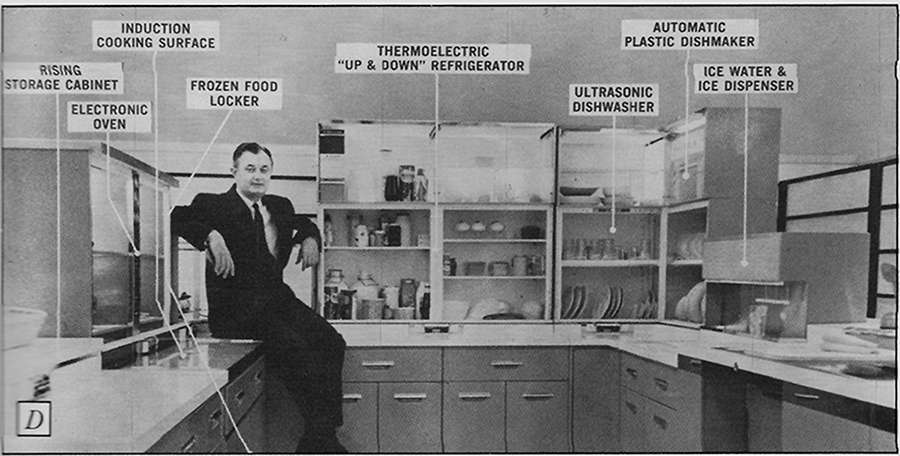
While the ice water and water dispenser, frozen food locker, electronic oven (aka microwave) have become ubiquitous household appliances, induction cooktops are still trying to make inroads in America and adjustable height storage cabinets, which have actually been available for years, are virtually unknown to the average consumer. Of the last three products, the automatic plastic dishmaker is technologically feasible but has low appeal for environmental reasons. The thermoelectric ‘up and down’ fridge and ultrasonic dishwasher don’t exist commercially.
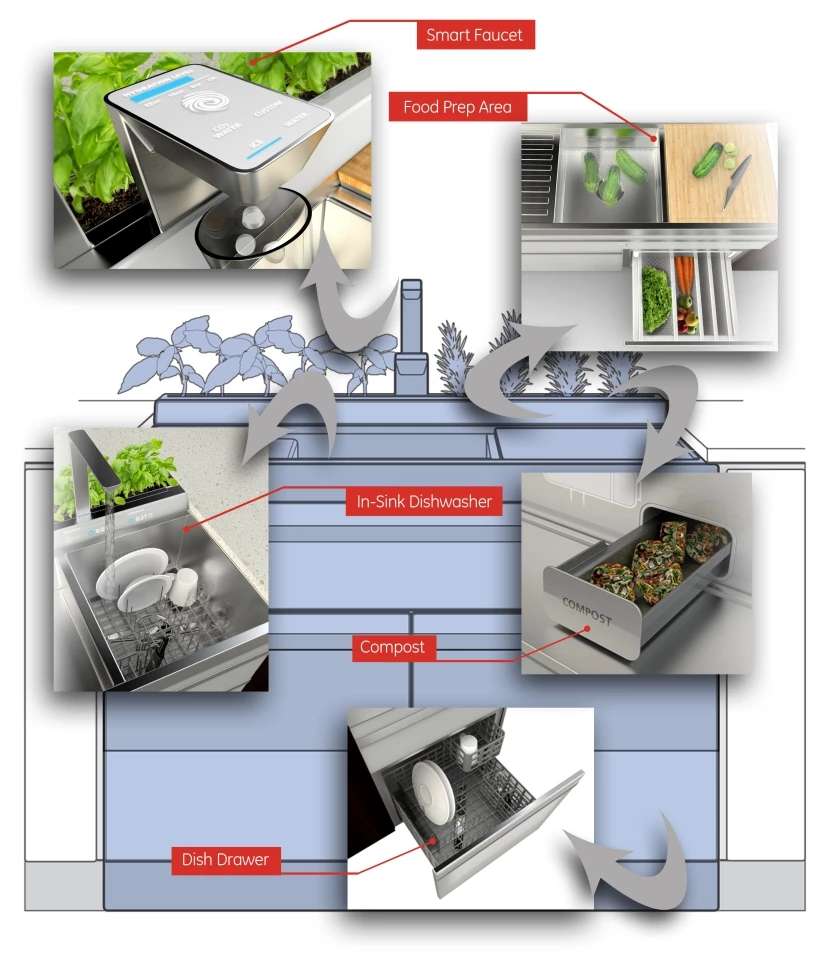
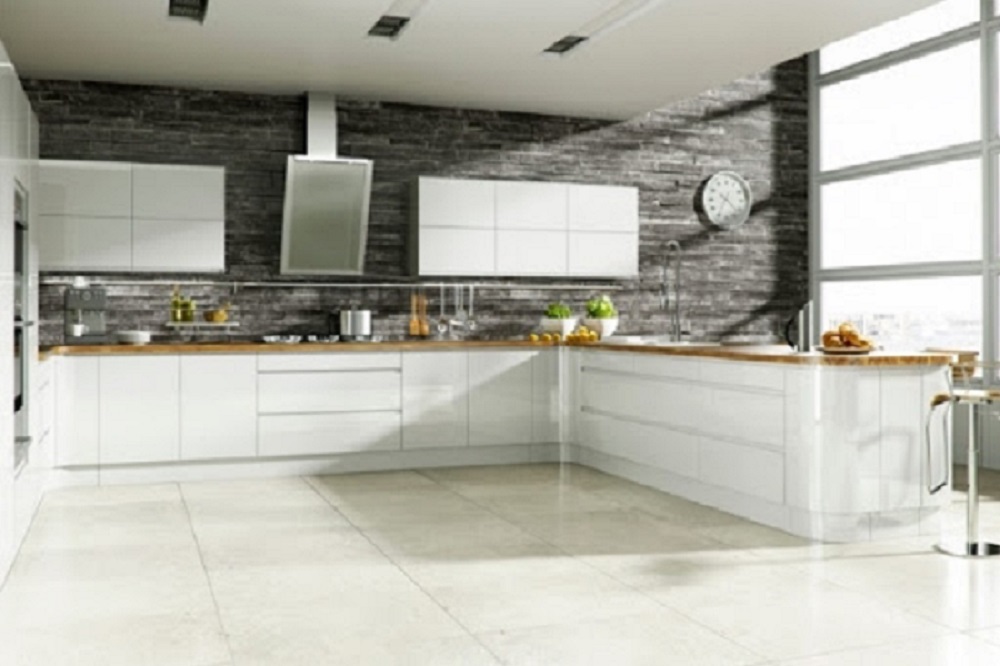
GE, Miele, Electrolux, Whirlpool and Ikea have researched into the kitchens of the future based on several macro trends: multi-generational living, accessibility, wellness & sustainability, and smart technology. Surprisingly the scenarios, set to 2025 through 2063, seem more evolutionary than revolutionary compared to the bold prognostications of the 50’s.
Multi-generational Living – The increasing need to care for aging relatives, coupled with the return of adult children to empty nesters’ homes after the Great Recession, and changing demographics in this ethnically diverse country all contribute to the rise of multi-generational families. Having a household that ranges from toddlers to elderly parents require a home that is responsive to a wide range of needs.

Screening for heath is essential for homebound seniors. Both GE and Miele are proposing health monitors that can measure the occupants’ vitals and analyze their health data. Miele’s version also makes recipe recommendations based on the information collected.
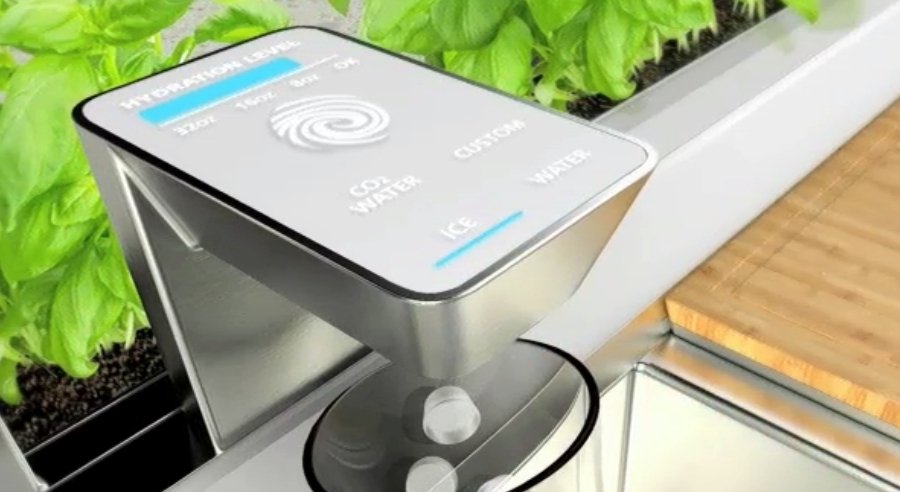
For GE, the kitchen faucet is certainly going to be multi-tasking: it’ll be an ice dispenser, beverage station, and can also check your hydration level with the touch of a finger. However primary health monitoring is done via the bathroom mirror while the cabinet dispenses medication from refillable cartridges.
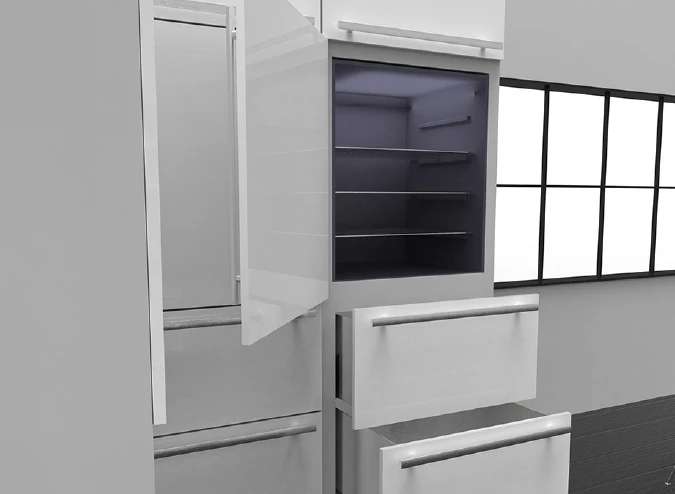
GE’s Fresh and Serve is the next generation of food warmers that can give alerts when food is ready in addition to keeping pre-made meals at optimal temperature and humidity for an extended time. It’s a convenient way for care givers who are away at work to ensure their loved ones enjoy healthy and tasty food.
Accessibility – Even though the American with Disabilities Act (ADA) was enacted decades ago, it only applies to public spaces, and there has been nominal interest in implementing universal design principles in residences – until now. Having a multi-generational household with children and elderly parents requires a the home that is responsive to a wide range of needs. Additionally the desire of baby boomers, who hold a significant amount of disposable income, to age in place is prompting manufacturers to create solutions to help them live with dignity at home.
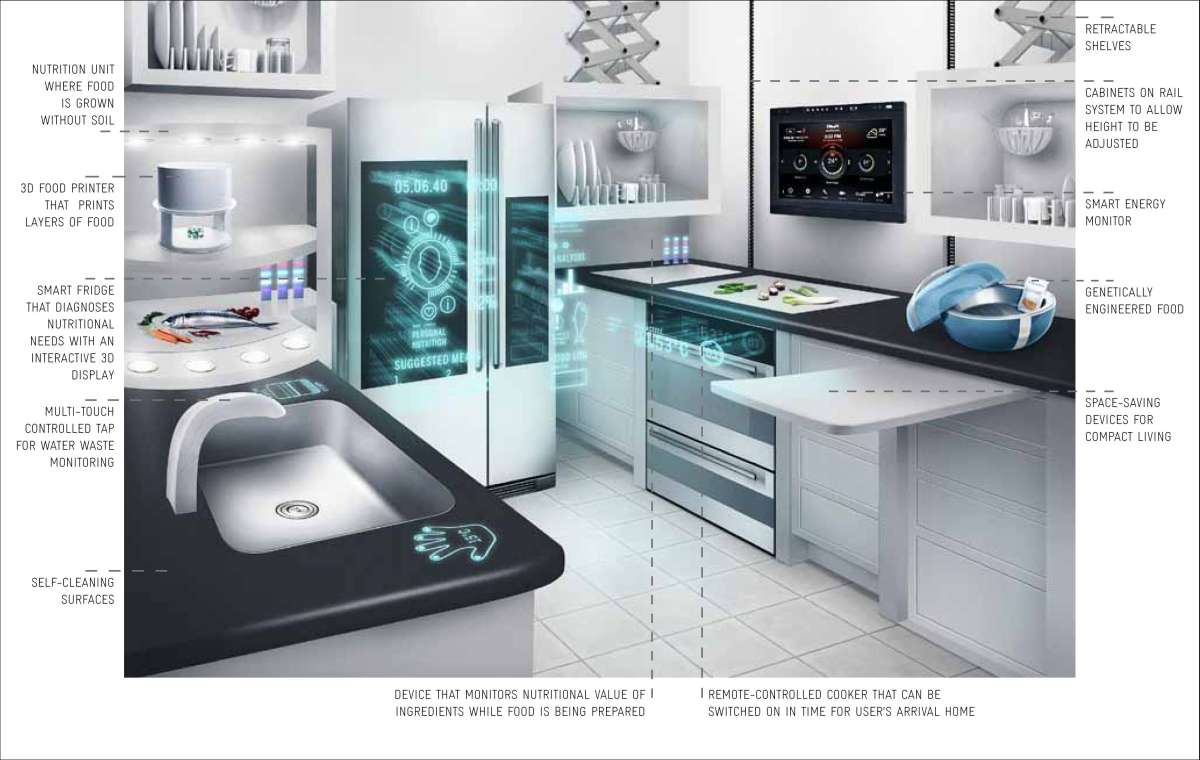
Both Ikea and GE expect widespread use of height adjustable counters and cabinets so the needs of all individuals, regardless of stature and mobility, can be met.
GE’s concept video of a kitchen that can be personalized in real time to meet individual physical requirements.
While Ikea advocates retractable shelves in its 2040 kitchen, GE envisions the kitchen of the future to be fully customizable to accommodate each user’s needs. It expects wide adoption of motion, voice & facial recognition features, motorized cabinetry, lift-assisted appliances and magnetic cooktops to provide a safe and accessible kitchen for everyone.
However these technologies are hardly novel: they were showcased by General Motors and RCA-Whirlpool in the 50’s and are currently available, though largely unknown to the average consumer. Welcome to the Kitchens of Future Past!


